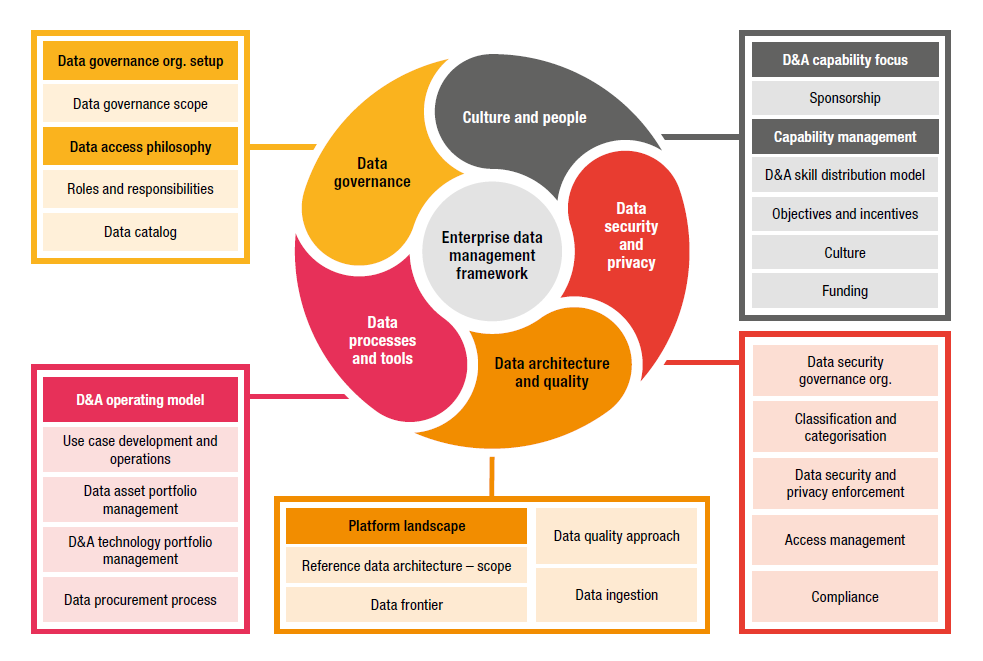What is your data upskilling plan for your employees?

Quelle: PwC data-strategy-study, april2021
Dates are the oil of the 21st century. Admittedly, the comparison is not new. But just as oil is only a raw material and has only become valuable and often indispensable for today’s society through intelligent use, digitization is about the use of data and its value creation processes. The better the company’s data strategy, the more successful these are.
A recent study by PwC “One data strategy to rule them all” identified five key factors that determine the success of data analytics. This has resulted in a structured framework that guides through the key issues that arise when building a good data strategy.
Here are the five priority topics
- Organizational structure & capability focus
- Capability Management
- Data & Analytics (D&A) operating model
- Platform landscape
- Data access philosophy
The associated framework has the following dimensions
- Data governance
- Data processes and tools
- Data architecture and quality
- Data security and privacy
- Culture and people
In the following these framework is broken down to 3 data archetypes, which result from the level of digitization of the company.
- The Foundational decentralised archetype. The foundational, decentralised archetype represents companies and organisations that are either at the beginning of their data journey or have not yet developed or implemented an overall vision of what their D&A capabilities must include, what they want to achieve with their data initiatives, and what their data-driven business model of the future should look like. Such companies typically show a low level of data maturity. They are in an organic default position with decentralised and scattered data governance. They have not yet harmonised their principles; their tools and D&A activities are not coordinated.
- The Centralised archetype. The centralised archetype 2 represents companies and organisations that choose a uniform approach to governance for standardised processes. Archetype 2 companies typically follow uniform principles and have strong regulations for common tools and platforms. Their D&A activities are centralised. Such companies develop a strategic vision and put strong emphasis on harmonisation. They exhibit a more advanced and more conscious level of data maturity than archetype 1 companies.
- The Embedded decentralised archetype. The embedded, decentralised archetype 3 represents enterprises that have a high level of data maturity. These companies tend to have harmonised governance, while keeping flexibility in the individual business units. They have templates and a knowledge library for principles, tools and D&A activities. At the same time, they are flexible in their use and application. Archetype 3 companies have a developed strategic vision, characterised by a balance of harmonisation and flexibility.
The penultimate part of the study shows a roadmap how to reach the next level and also links this to the question: “What is your data upskilling plan for your employees?”
The insight gained is comparable to the results from the factlights2021, in which the level of digitization of companies is also described with Frontrunner, Discoverer and Adopters.



